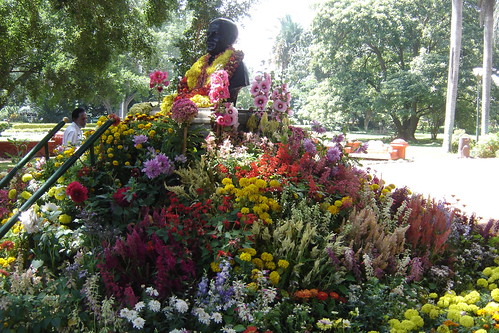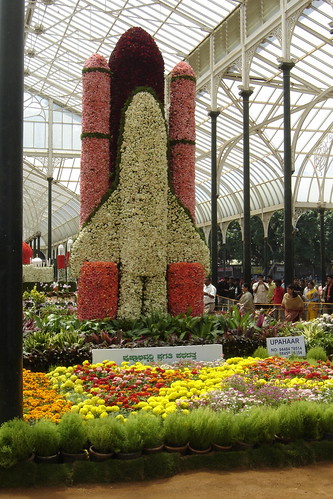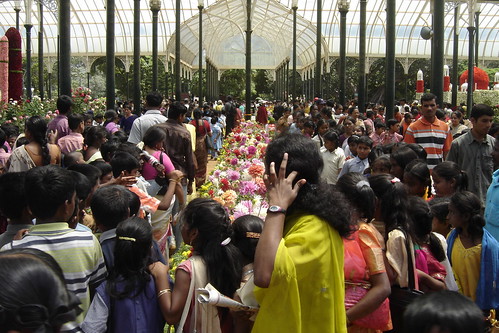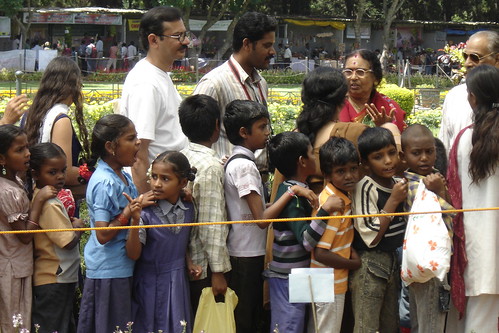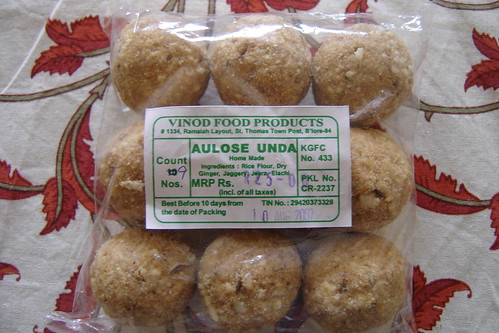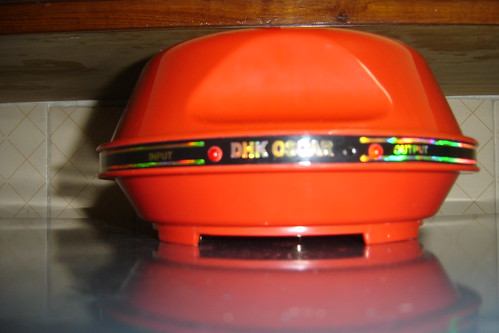
This weekend we went off to Coorg, a region southwest of Bangalore, to stay on a coffee and cardamon plantation. We got a car and driver to pick us up around 5 am and set out. The driver made great time -- it took about 5 hours. The roads around Coorg were noticeably better than then were the first (and only other) time we went there, in March 2006. Still some bumpy and twisty parts, but much easier going.
The plantation, Honey Valley Estate, is at the top of very rough, unpaved roads. Our car had to stay at the bottom and we were picked up by a jeep for the last few miles. As soon as we got into our room and had a little tea, we headed out for a hike down a slope nearby. There were lots of bugs we'd never seen:
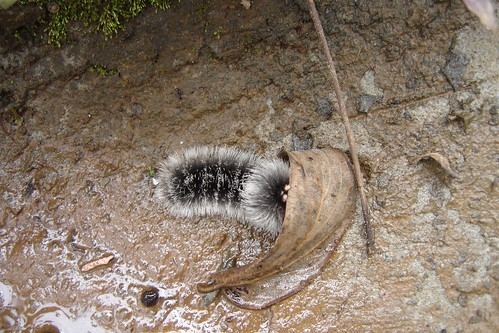
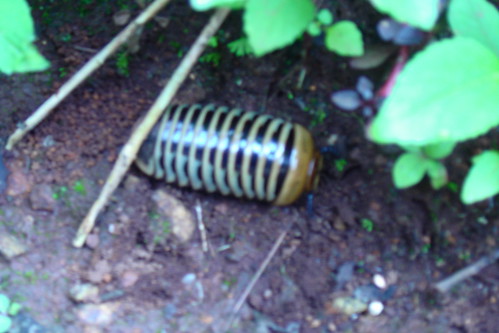
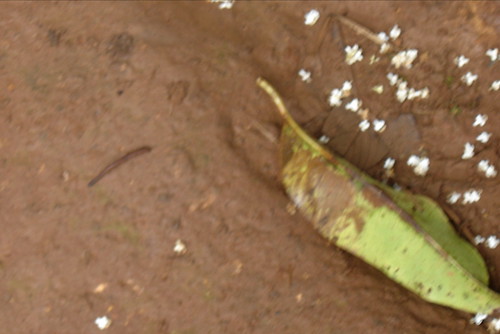
That last one moved like an inchworm, standing on one end and then bending over and pulling itself forward. In fact, it seemed to wave in the air and then head in our direction. The first time we saw it, it seemed really cute.
We walked down the path a little. And then Don felt a prick and a little movement on his leg. There was something black, slightly pulsing, on his shin. With great disgust he ripped the thing off and threw it away. Those things weren't inchworms, they were leeches. Time for a retreat.
After making our way back up the path to a rockier part, we de-leeched our legs and feet. I had three or so on me, with one actually attached through my socks. Only one of them had been there long enough to get really big. I pulled him off and squished him on a rock, happy to see him dead but not so glad to see the four inches of blood that spurted out on the ground. Hey, I was using that!
During the retreat, there may have been disgust. And swears. Maybe even whimpers.
When we got back to our room, Don had to take off a couple more leech friends, and I had to track down one, waiting near the door, that had hitched a ride on my jeans but hadn't been able to suck yet. And here's Don's foot. He'd wiped off the blood but it was still beading up. The chemicals leeches inject into the wounds they make stop the blood from coagulating, but the bites also have things that increase blood flow and spread the chemicals farther into the bloodstream. It's a drug cocktail that guaranteed that the Band-Aids I slapped on my big bite kept getting soaked through.
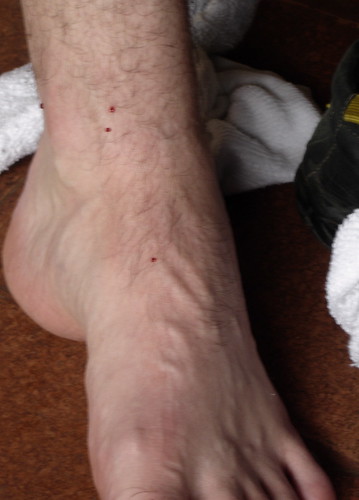
Soon we'd calmed down enough to wish that we'd just spent the weekend drinking too many pots of tea and going to the Forum Mall to buy shirts with loud patterns. And wishing we had some post-leech-trauma medication. And deciding that if we had to spend the rest of the weekend on the porch reading large books and sending psychic waves of hate to leeches everywhere, then that was A-OK.
Important note: our Outlook Traveller guidebook does say to avoid the area from July-August, "when the rainforest receives heavy showers and teems with leeches." But we didn't really read that bit until we were speeding down the highway. And to us, leeches are something that live in stagnant, dirty water, not something waiting for you on winding paths. Oops! Somehow the many many nature documentaries shown here extolling India's natural wonders never got around to Coorg's evident richness in leeches.
Tune in tomorrow, to learn leech wisdom from a plucky Australian and a host of others.
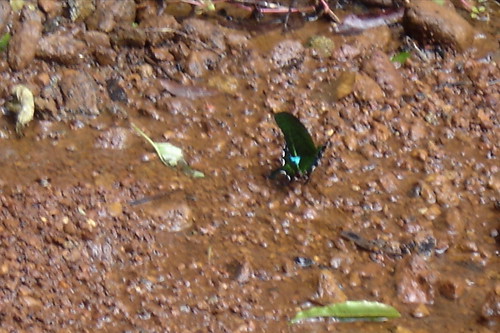



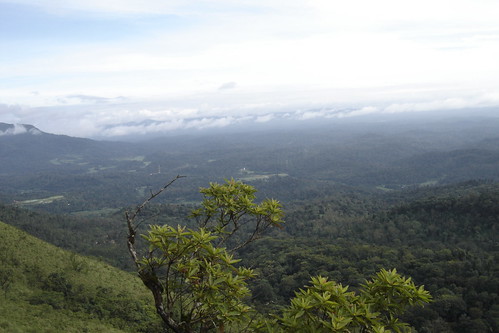
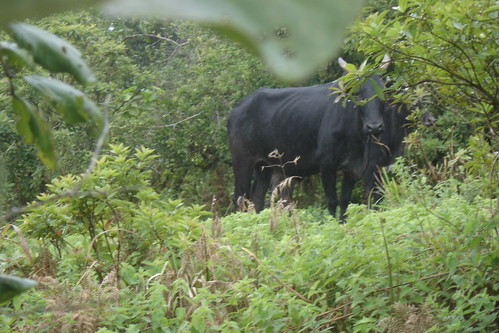
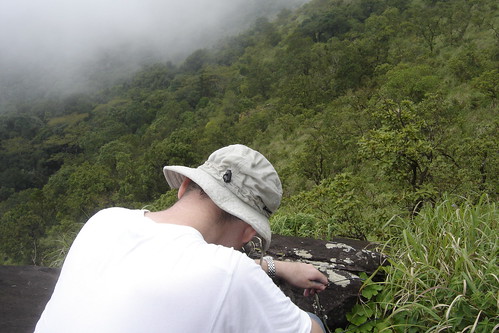











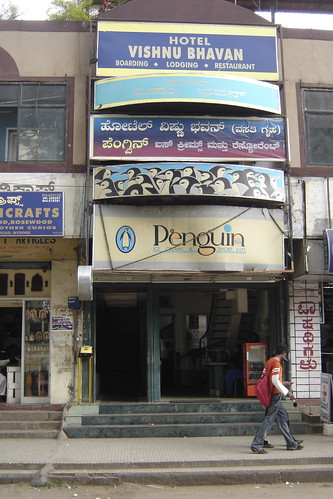




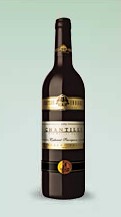 A bit of a surprise. I bought it at the store on a whim, mainly because its label didn't look that annoying, and because I didn't have enough rupees for a fancy-pants reserve wine that was shinier. But we lucked out, because it was actually darn good.
A bit of a surprise. I bought it at the store on a whim, mainly because its label didn't look that annoying, and because I didn't have enough rupees for a fancy-pants reserve wine that was shinier. But we lucked out, because it was actually darn good. 